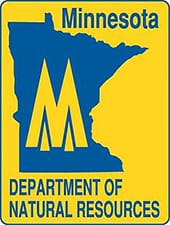

St. Paul, MN -(AmmoLand.com)- Favorable weather conditions led to a 33 percent increase in the number of Minnesota pheasants compared to last year at this time.
However, the 2015 pheasant index is 39 percent below the 10-year average and 59 percent below the long-term average. Habitat loss continues to be the main factor in a long-term decline of the state’s pheasant population, according to the Minnesota Department of Natural Resources.
“Habitat loss still poses serious threats to pheasant populations and other grassland wildlife,” said Nicole Davros, a DNR research scientist. “The short-term increase is good news that results from a mild winter and relatively favorable weather during the nesting season – conditions that led to increases in the roadside index for many farmland wildlife game species.”
Minnesota’s 2015 pheasant season begins Saturday, Oct. 10, and ends Sunday, Jan. 3.
Roadside survey data
The DNR’s August roadside survey for pheasants showed a 33 percent increase in the overall pheasant index from 2014. This year’s statewide pheasant index was 40.7 birds per 100 miles of roadside driven.
Weather and habitat are the two main factors that drive Minnesota’s pheasant population trends. Weather causes annual fluctuations in roadside indices. Undisturbed grassland habitat for nesting and brood-rearing drives the longer-term pattern.
All regions showed increases in the roadside pheasant index compared to 2014 except for the south-central region, which stayed the same as last year. The highest pheasant counts by number of pheasants were in the southwest, west-central and east-central regions, where observers reported 46 to 76 birds per 100 miles driven. Looking at percentage increases from 2014, the highest were in the central, east-central, and southeast regions with increases of 44 percent, 126 percent and 138 percent, respectively. Hunters will find good harvest opportunities in these areas.
Pheasant populations: short-term gains, long-term loss
“The relatively mild winter and good nesting season conditions have really helped our pheasant population across their range this year. It just goes to show you how resilient these birds can be if given the right conditions,” said Davros, who oversees the August roadside survey.
The loss of nesting habitat, especially Conservation Reserve Program (CRP) acres, is the primary reason there has been a steady decline in Minnesota’s pheasant harvest since the mid-2000s.
Minnesota has lost 153,492 acres of CRP since last year and greater than 247,000 acres of CRP since 2007. Many more acres – likely more than 495,000 acres – could expire by 2018 if contracts are not renewed or new acres are not enrolled into the program.
“The future trend for pheasants, and all grassland-dependent wildlife, does not look good unless we can find ways to keep habitat on the ground,” Davros said.
Winter conditions and survival
Good winter conditions led to higher overwinter survival of hens, which were up 32 percent from last year. Higher winter hen survival means more pheasant nests in the spring.
One important indicator of annual reproduction is the number of broods observed per 100 miles. The 2015 brood index increased 35 percent from last year. The number of broods per 100 hens increased 2 percent from 2014.
The average number of chicks per brood was similar to last year and the 10-year average but was 14 percent below the long-term average. The median hatch date of nests was June 9, which was three days earlier than the 10-year average and seven days earlier than last year. Some areas of the state received above-average rainfall amounts in May, which may have delayed or interrupted nesting attempts. However, near-normal temperatures and precipitation in June and July were beneficial to nesting birds and young chicks.
Monitoring pheasant population trends is part of the DNR’s annual August roadside wildlife survey, which began in 1955. DNR wildlife managers and conservation officers in the farmland region of Minnesota conduct the survey during the first half of August. This year’s survey consisted of 170 25-mile-long routes, with 151 routes located in the ring-necked pheasant range.
Observers drive each route in early morning and record the number and species of wildlife they see. The data provide an index of relative abundance and are used to monitor annual changes and long-term population trends of pheasants, gray (Hungarian) partridge, eastern cottontail rabbits, white-tailed jackrabbits, mourning doves and other wildlife.
The 2015 August Roadside Survey report and a map of pheasant hunting prospects can be viewed and downloaded from www.mndnr.gov/hunting/pheasant. Also recorded in this year’s survey:
- The mourning dove index increased 14 percent from 2014 but remained below the 10-year average and long-term average.
- The gray partridge index increased 150 percent from 2014 but remained well below the 10-year and long-term averages.
- The cottontail rabbit index increased 36 percent from 2014 and was 34 percent above the 10-year average and 20 percent above the long-term average.
- The white-tailed jackrabbit index was similar to last year and remains at an historic low.
- The white-tailed deer index was similar to 2014 and was 33 percent above the 10-year average and 98 percent above the long-term average.
During the 2015 pheasant season that runs from Oct. 10 to Jan. 3, the daily bag limit is two roosters through November, and it increases to three roosters on Tuesday, Dec. 1. The possession limit is six roosters (increasing to nine roosters on Dec. 1). Shooting hours are 9 a.m. to sunset.
Additional details are available on the DNR website at www.mndnr.gov/hunting/pheasant.
About Minnesota Department of Natural Resources:
The mission of the Minnesota Department of Natural Resources (MNDNR) is to work with citizens to conserve and manage the state’s natural resources, to provide outdoor recreation opportunities, and to provide for commercial uses of natural resources in a way that creates a sustainable quality of life.
For more information, visit: www.dnr.state.mn.us.
